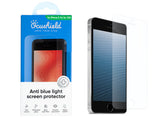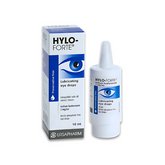Protect your Children's eyes from Digital Eye Strain
Protect Your Child’s Eyes from Digital Eye Strain
In today’s screen-filled world, protecting your child’s eyes isn’t just helpful, it’s essential. From online learning to gaming and social apps, kids are spending more time than ever on digital devices. The result? Digital Eye Strain.
But here’s the good news: with the right habits, tools, and nutrition, you can help prevent this modern-day problem and protect your child’s developing vision.
1. Start with Smart Screen Habits
The first step? Don’t rely on verbal reminders alone. Telling your child to "put the iPad down" often leads to conflict or resistance. Instead, use digital wellbeing apps that set automatic screen time limits. When the device shuts off or locks out apps at a set time, it reduces arguments and helps kids develop boundaries.
Set daily limits and include “no screen zones” like mealtimes and bedrooms. This creates balance without power struggles.

2. Blue Light Filters for Evening Use
Digital screens emit blue light that disrupts sleep hormones — especially dangerous for kids after sunset. Ocushield's blue light-blocking glasses and screen protectors are specifically designed to block harmful high-energy visible (HEV) blue light. Their filters block up to 99% of UV and 40% of blue light at 430nm.
The key? Make it a rule to wear Ocushield glasses or use Ocushield filters after 6–7pm. This supports melatonin production and promotes deeper, more restorative sleep.

3. The EyeHouse 10:10 Rule (Plus Eye Gym Tips)
EyeHouse encourages the 10:10 Rule: Every 10 minutes, take a 10-second break and look 10 feet away. During this short break, teach your child to roll their eyes in slow circles and switch focus between a near and far object.
This “eye gym” boosts flexibility and muscle endurance in the eyes, just like a stretch break for their body.

4. Don’t Forget to Blink!
When kids are on screens, blink rate drops from around 15–20 blinks per minute to just 3–5. This leads to dryness, redness, and fatigue.
Encourage them to blink fully every 3 seconds during screen use. You can even stick a fun “Blink Buddy” reminder next to the screen.

5. Feed Their Eyes Right
Nutrition plays a big role in eye health. Kids need:
Omega-3s (found in salmon, walnuts, flaxseed)
Lutein & Zeaxanthin (found in spinach, kale, eggs)
Vitamin A (sweet potatoes, carrots)
Zinc & Vitamin C (pumpkin seeds, citrus, strawberries)
A 2019 study published in Nutrients showed that lutein and zeaxanthin-rich diets improve visual performance and reduce oxidative stress in children’s eyes.

6. Strengthen Eye Muscles with AmblyoPlay
Eye muscles can weaken from prolonged near tasks (like reading or screen time). Programs like AmblyoPlay offer engaging, clinically-backed vision therapy that improves convergence, tracking, and eye teaming.
Think of it as PE for their visual system, fun, effective, and personalised.

7. Protect Sleep to Protect Vision
Kids aged 5–12 need 9–11 hours of sleep. But late-night screen use delays melatonin release, pushing back sleep onset. The result? Tired eyes, lower focus, and slower development.
Set a consistent bedtime before 8:30pm if wake-up is at 6:30am. Dim lighting in the evening and screen-free wind-down time helps reset the body clock.

Final Thoughts from EyeHouse
You don’t have to ditch devices, but you do need to build in healthy boundaries and habits.
With smart tools like screen filters, digital usage apps, good nutrition, and simple routines like the 10:10 Rule, you’re giving your child the foundation for lifelong eye health.
At EyeHouse, we’re here to help protect little eyes for a bright, focused future.








